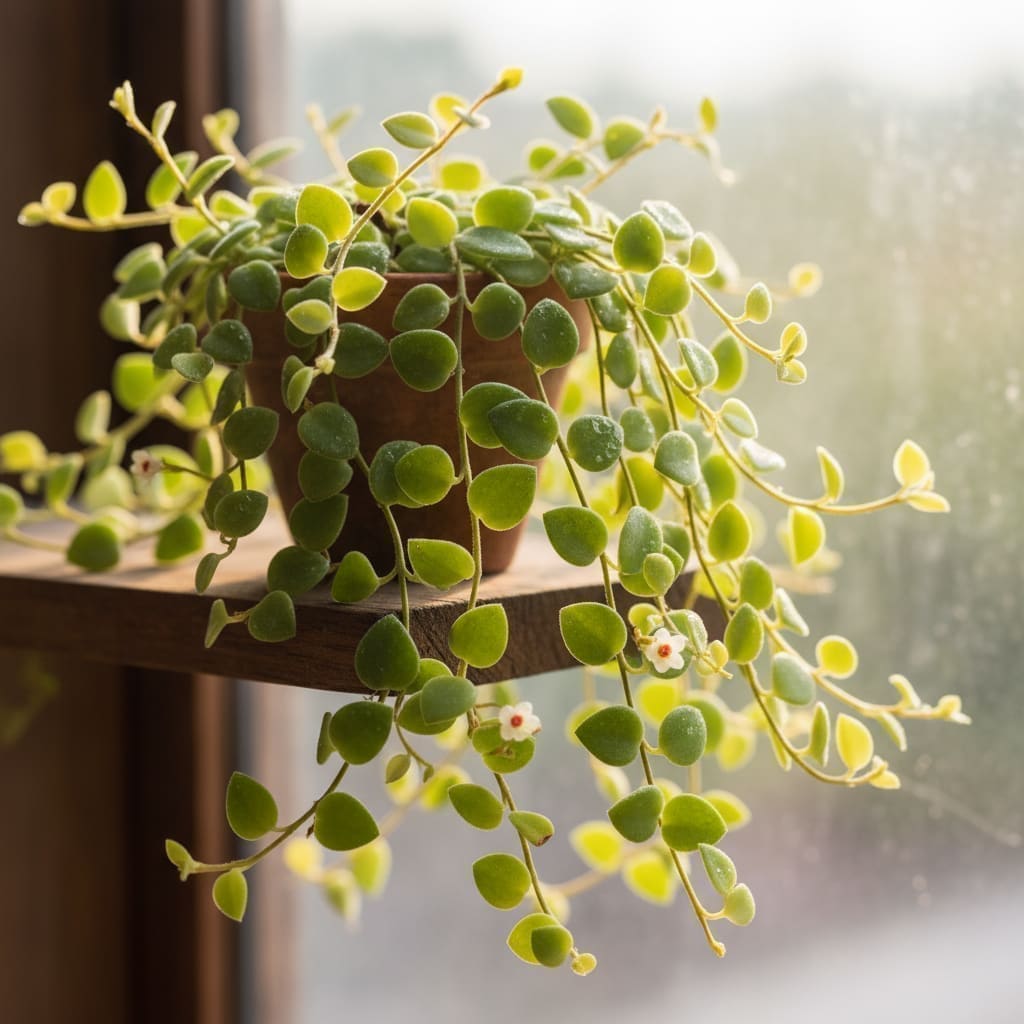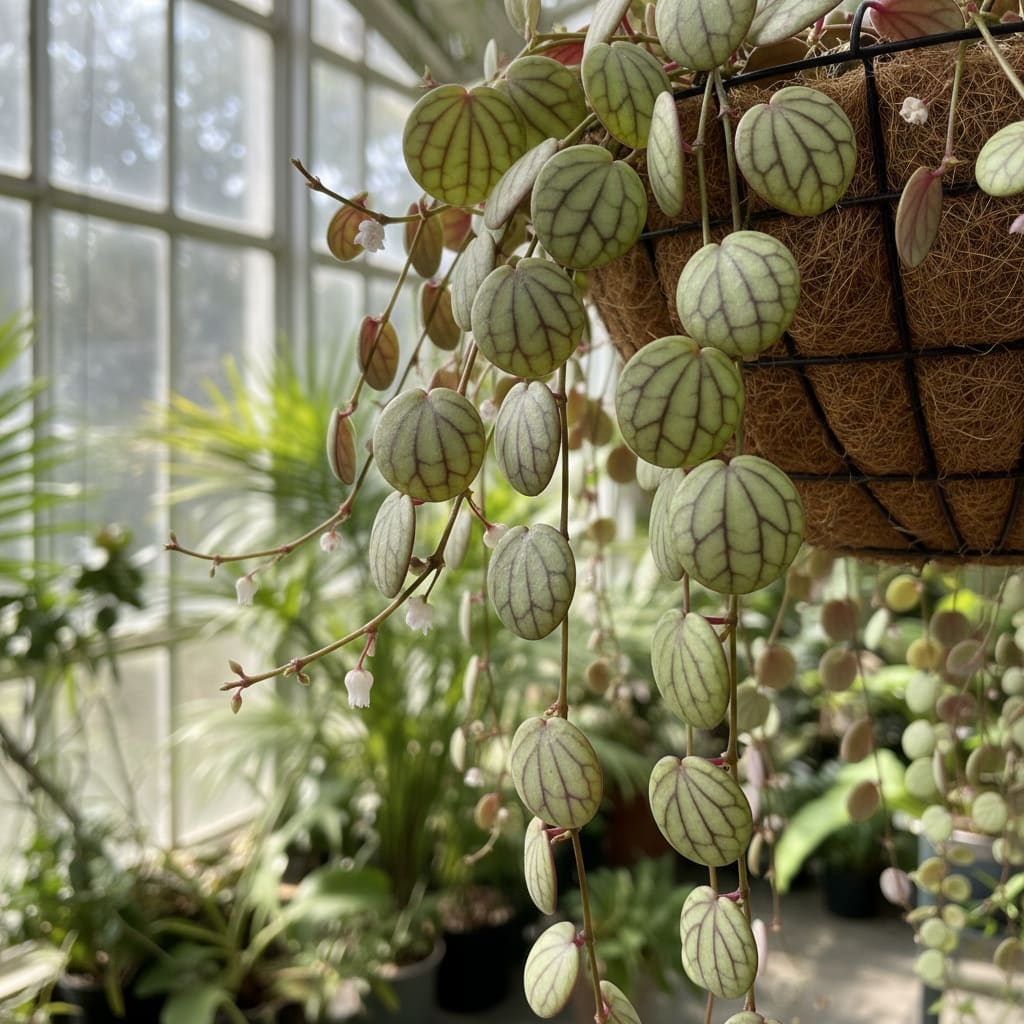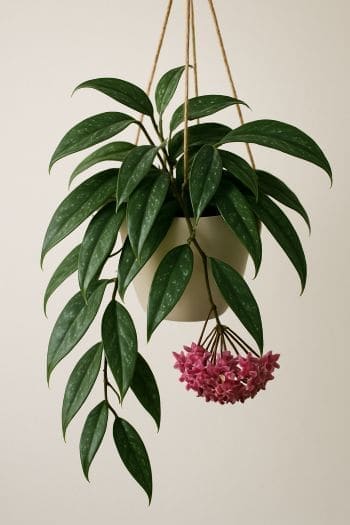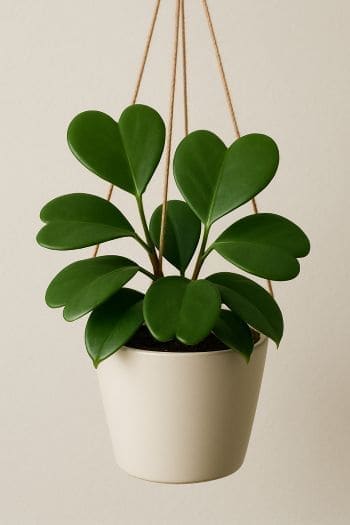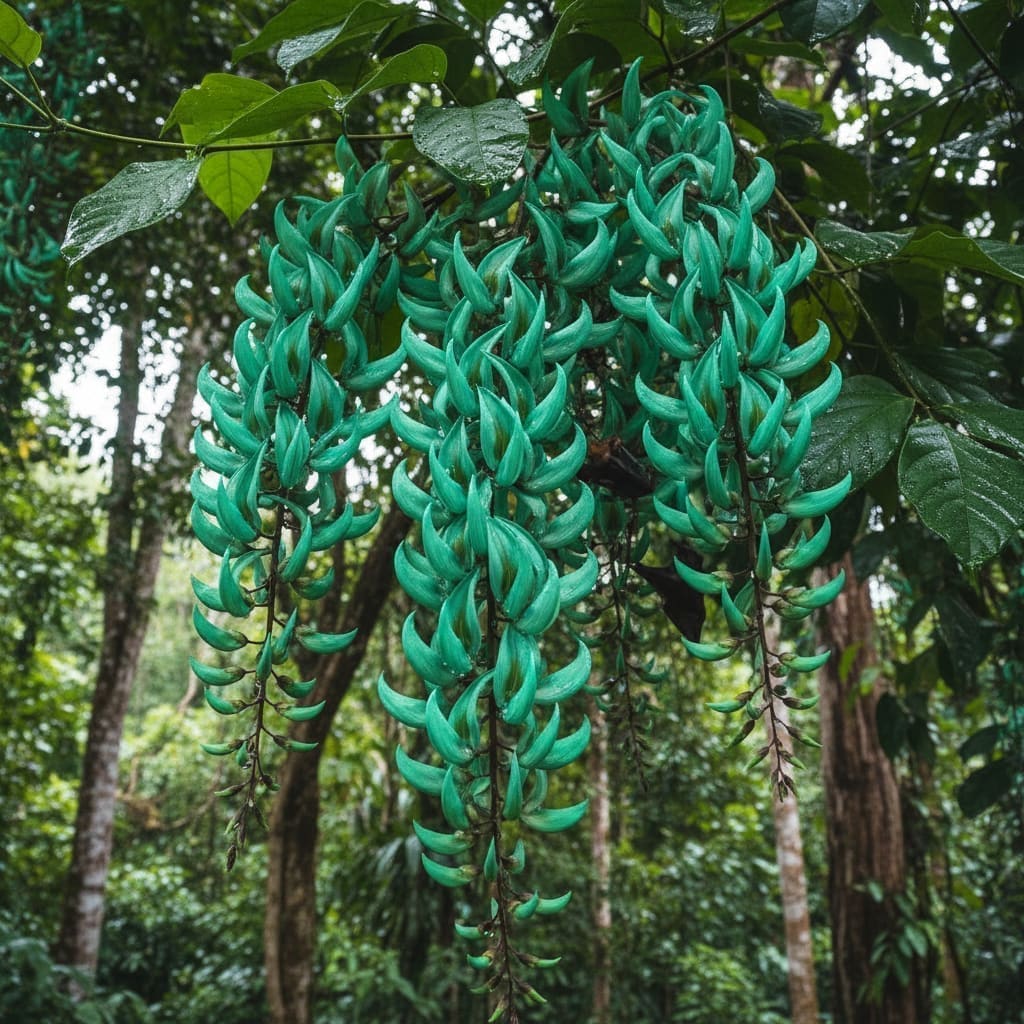Dischidia ruscifolia (Million Hearts Plant) Care & Growing Guide
Overview
Dischidia ruscifolia, commonly known as the Million Hearts Plant, is a charming trailing epiphyte native to the Philippines. Its name comes from the dense pairs of small, heart-shaped leaves that line its slender stems, creating a cascading effect perfect for hanging baskets or decorative mounts. In its natural habitat, this plant grows on trees, drawing moisture and nutrients from the air and surrounding organic matter.
As a houseplant, Dischidia ruscifolia is valued for its low-maintenance nature, unique growth habit, and adaptability to indoor conditions when provided with bright, indirect light and moderate watering.
Identification & Growth Habit
Dischidia ruscifolia is a trailing or climbing plant with thin, wiry stems covered in opposite pairs of small, succulent-like leaves shaped like hearts. Mature plants can reach several feet in length, making them ideal for hanging displays or trained to climb supports. In optimal conditions, it may produce small clusters of white flowers, adding to its ornamental appeal.
Its epiphytic growth habit means it does not require heavy soil and thrives in airy, well-draining media. In the wild, it clings to bark or other surfaces, using aerial roots to anchor itself.
Light & Placement
- Light: Bright, indirect light is ideal. Place near an east- or north-facing window, or a few feet back from a south or west window with sheer curtains.
- Tolerance: Can adapt to medium light but growth will slow and leaf density may decrease.
- Placement: Hanging baskets, high shelves, or mounted displays allow the trailing stems to cascade naturally.
Watering & Humidity
Water thoroughly when the top inch of the potting mix feels dry—generally every 7–10 days in average indoor conditions. Reduce frequency in cooler months or low light. Avoid letting the plant sit in water, as it is prone to root rot.
Humidity: Prefers 50–70% humidity. In dry indoor environments, increase humidity by:
- Misting lightly in the morning
- Using a pebble tray with water
- Running a room humidifier nearby
Soil & Repotting
Use a lightweight, well-draining potting mix suitable for epiphytes or orchids. A blend of orchid bark, perlite, and a small amount of peat or coco coir works well. This ensures aeration and prevents waterlogging.
Repot every 2–3 years or when the plant outgrows its container. Choose a pot with drainage holes to prevent excess moisture retention.
Fertilizing
Feed monthly during spring and summer with a balanced liquid fertilizer diluted to half strength. Suspend or reduce feeding in fall and winter when growth naturally slows. Over-fertilizing can damage roots and cause leaf burn.
Pruning & Training
Prune to control length, encourage branching, and maintain a full appearance. Use clean, sharp scissors to trim stems just above a leaf node.
Training options include:
- Trellis or moss pole: Guide stems upward for a climbing display.
- Hanging basket: Allow natural trailing for a cascading effect.
- Mounted display: Attach to driftwood or coconut shells to mimic its epiphytic habitat.
Propagation
Dischidia ruscifolia is easily propagated from stem cuttings.
Step-by-Step Propagation
- Select a healthy stem with at least two pairs of leaves.
- Using sterilized scissors, cut just below a leaf node.
- Remove the lowest pair of leaves to expose nodes for rooting.
- Place the cutting in water or a moist, well-draining propagation mix.
- Keep in bright, indirect light and maintain high humidity.
- Roots typically develop in 2–4 weeks; transplant to a small pot once established.
Common Problems
Pests
- Mealybugs: Look for white, cottony clusters. Remove with a cotton swab dipped in alcohol and treat with insecticidal soap.
- Spider mites: Fine webbing and stippled leaves indicate infestation. Increase humidity and use miticide if needed.
- Scale insects: Brown, shell-like bumps on stems; scrape off gently and treat with horticultural oil.
Diseases
- Root rot: Caused by overwatering. Remove affected roots and repot in fresh, well-draining mix.
- Leaf drop: Often due to sudden temperature changes or prolonged dryness.
Toxicity & Pet Safety
Dischidia ruscifolia is considered toxic if ingested. Keep out of reach of pets and children, and handle with care when pruning or propagating.
Styling & Decor Tips
- Hang in a macramé plant hanger for a bohemian look.
- Mount on driftwood or in a coconut shell to showcase its epiphytic nature.
- Combine with other trailing plants for a lush, layered display.
- Place against a light-colored wall to highlight the heart-shaped foliage.
Varieties & Cultivars
While Dischidia ruscifolia is most commonly seen in its standard green-leaved form, some growers may encounter variegated varieties with cream or yellow leaf margins. Variegated forms typically grow more slowly and require slightly brighter light to maintain coloration.
Buying Tips & Maturity
When selecting a plant, look for firm, unblemished leaves and flexible, healthy stems. Avoid specimens with signs of pests or mushy roots. Younger plants may have shorter, sparser stems; with proper care, they will fill out over time and develop denser foliage.
Seasonal Care
- Spring/Summer: Peak growth season; water and fertilize regularly, and consider propagation.
- Fall: Gradually reduce feeding; monitor watering needs as growth slows.
- Winter: Keep in warm, bright conditions; avoid cold drafts and overwatering.
FAQ
- How fast does Dischidia ruscifolia grow? In optimal light and humidity, it can produce several inches of new growth per season, but growth slows in lower light or cooler temperatures.
- Can it grow outdoors? In warm, frost-free climates, it can be grown outdoors in shaded or filtered light areas. Protect from direct midday sun and cold temperatures.
- Does it flower indoors? Yes, it can produce small white flowers indoors if given sufficient light and consistent care, though flowering is more common in mature plants.
- Why are the leaves yellowing? Common causes include overwatering, poor drainage, or insufficient light.
- Can I mount it like an orchid? Yes, it adapts well to mounted culture when provided with regular misting and high humidity.
Source: Wikipedia
Troubleshooting Scenarios
- Leggy growth with sparse leaves: Indicates insufficient light; move closer to a bright window or supplement with a grow light.
- Wrinkled or puckered leaves: Often a sign of underwatering or prolonged low humidity; adjust watering schedule and increase ambient moisture.
- Brown leaf tips: May result from overly dry air or excess fertilizer salts; flush soil with water and improve humidity.
- Sudden stem collapse: Could be due to root rot; inspect roots and remove affected portions promptly.
Advanced Pruning & Training Techniques
For a fuller display, pinch back new growth tips regularly to encourage lateral branching. Advanced growers may weave pliable stems through decorative hoops or wire frames to create living shapes. When training on a trellis, secure stems loosely with soft plant ties to avoid constriction as they thicken. Periodic rejuvenation pruning—cutting back older, woody stems—can stimulate fresh, vigorous shoots.
Companion Plant Suggestions
Pair Dischidia ruscifolia with other humidity-loving, trailing plants for a cohesive display. Suitable companions include:
- Hoya carnosa – shares similar light and watering needs.
- Peperomia prostrata – contrasting leaf pattern adds visual interest.
- Tillandsia species – epiphytic air plants that thrive in the same microclimate.
- Nephrolepis exaltata (Boston fern) – adds feathery texture beneath trailing stems.
Do's & Don'ts
- Do: Use sterilized tools for pruning to prevent disease spread.
- Do: Rotate the plant periodically for even light exposure.
- Don't: Expose to prolonged direct midday sun, which can scorch foliage.
- Don't: Allow water to collect in saucers, leading to root issues.
